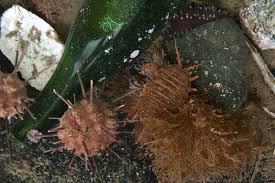
Giant isopods: Exploring the Fascinating World of Deep-Sea Creatures
The beach handles over 70Percent in the Earth’s surface, with only 5Per cent from it investigated. This has led to numerous interesting findings worldwide of marine critters. One of those will be the giant isopod, which is one of the very same family since the frequent woodlouse. Despite the fact that they are certainly not particularly gorgeous, Giant isopods are probably the most intriguing critters found in the depths from the beach. In this post, we shall investigate the exciting world of Giant isopods and why is them differentiate yourself from the other deep-seas animals.
1. Giant isopods Attributes: Giant isopods are a type of crustacean that can get older to 2 plus a 50 % ft long and weigh up around four weight. There is a flattened, oblong-molded physique split up into three specific segments – the pinnacle, the thorax, along with the belly. Their most noteworthy attribute is the piercing eyeballs, which rest on top of stalks that permit them to view their prey or predator without converting their heads. Giant isopods have solid, razor-sharp claws that allow them to smash and eat even the most difficult of seashells.
2. Habitat: Giant isopods are in the deep-water, about one thousand to 8,000 ft beneath the surface. They may be usually located near hydrothermal air vents, which provide the essential nutrients and vitamins by means of bacteria. They are most commonly found in the Atlantic, Pacific, and Indian Oceans, the location where the water is chillier, and also the pressure is better. Due to the depth at which they are living, very little is known concerning their reproduction or daily life period.
3. Habits: Giant isopods are slow-moving-relocating creatures that often keep hidden in the rocks or sediment about the seafloor. They are nocturnal critters, which implies they can be most productive at nighttime and usually cover up during the day. They may be scavengers and feast upon lifeless wildlife that drop towards the seafloor, along with reside microorganisms that they can trap with their robust jaws. They may reside for a long period without foods and possess been known to survive over 4 years without ingesting.
4. Value: Although Giant isopods are certainly not commercially useful, they perform a crucial role inside the marine ecosystem. These are a significant food source for other deeply-water critters, which includes crabs, sharks, and seafood. Their reputation indicates the health of strong-sea ecosystems, that may have enduring outcomes in the world’s oceans and weather. Due to the fact 50 percent of your air we inhale arises from the seas, it is important to understand and protect these ecosystems along with the beings that inhabit them.
5. Preservation: Sadly, tiny is famous concerning the human population of Giant isopods, in addition to their strong-ocean environment can make it hard to examine them or their ecosystem. Global warming, deep-water exploration, and overfishing create a significant danger to those animals as well as the strong-water ecosystems, helping to make shielding them more important. For that reason, it is vital to ensure protective measures are put in place, and efforts are created to save these interesting beings and make sure that they can, and their special ecosystems, carry on and succeed in the foreseeable future.
Simply speaking
The giant isopod is really a intriguing being which is still getting investigated, and that we have a whole lot to understand out of this deep-water creature. Even though the oceans carry many amazing things, it is very important to protect the unusual, exciting, and vital ecosystems that can be found strong beneath the work surface. It depends on us to guard them and ensure that they still prosper for generations to come to enjoy.
Proudly powered by WordPress. Theme by Infigo Software.